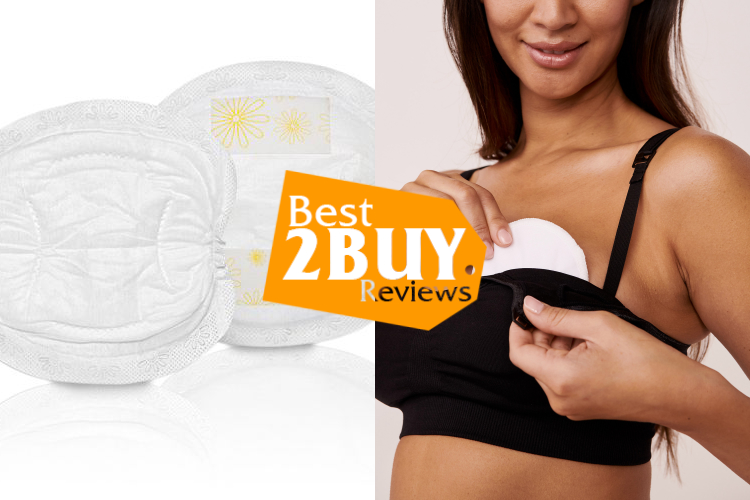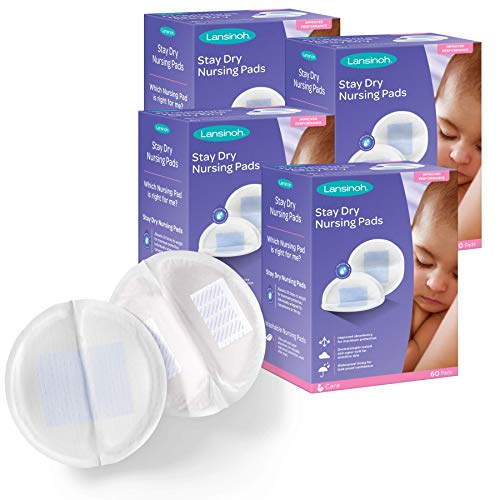How to Choose the Nursing Pads
A Comprehensive Guide to Nursing Pads: Comfort and Convenience for Breastfeeding Mothers

- 1. A Comprehensive Guide to Nursing Pads: Comfort and Convenience for Breastfeeding Mothers
- 1.1. What are Nursing Pads?
- 1.2. Why do I need Nursing Pads?
- 1.3. Types of Nursing Pads
- 1.3.1. Disposable Nursing Pads
- 1.3.2. Reusable Nursing Pads
- 1.3.3. Silicone Nursing Pads
- 1.3.4. Homemade Nursing Pads
- 1.3.5. Hydrogel Pads
- 1.4. Choosing the Right Nursing Pads
- 1.4.1. Absorbency
- 1.4.2. Material
- 1.4.3. Size and Shape
- 1.4.4. Adhesive Strips
- 1.5. Tips for Using Nursing Pads Effectively
- 1.6. Conclusion
Breastfeeding emerges as a poignant and vital element of maternal care, imparting manifold advantages to both the mother and infant. Nevertheless, this nurturing practice presents its own set of obstacles, among which managing leaks and discomfort is noteworthy. Enter nursing pads, alternatively termed breast pads, now deemed indispensable for lactating mothers as they provide a remedy for these prevalent challenges. This piece delves into the multifaceted realm of nursing pads, elucidating their functions and varieties, while also offering insights into selecting and utilizing them with efficacy.
What are Nursing Pads?
Nursing pads are designed to absorb any leaked milk between breastfeeding sessions. Worn discreetly inside your bra, they prevent moisture from reaching your clothing and maintain a dry environment. Available in various styles, shapes, and sizes, these pads can be either disposable or reusable.
Why do I need Nursing Pads?
When opting for breastfeeding, it's essential to anticipate occasional milk leakage between feedings. It's quite normal for milk to escape when you hear a baby cry or near your baby's regular feeding time. Additionally, while your baby is nursing on one breast, the other may leak due to the simultaneous let-down reflex in both breasts. It takes some time for your milk supply to stabilize, so be prepared to use nursing pads for at least a few months.
As mentioned earlier, it's crucial not to retain moisture against your skin. Keeping your nipples as dry as possible is vital to prevent irritation or yeast infections. Even when using breast pads, it's important to change them frequently when they become wet.
Types of Nursing Pads
Disposable Nursing Pads
Disposable nursing pads are the go-to option for many mothers due to their convenience. Designed for single-use, these pads are available in various shapes and thicknesses, offering flexibility for personal preference. They often come with adhesive strips to secure them in place within the bra. Ideal for on-the-go use and travel, disposable pads eliminate the need for washing but can become costly over time as continuous repurchasing is required.
Reusable Nursing Pads
For a more sustainable and cost-effective option, reusable nursing pads are gaining popularity. Crafted from materials that withstand multiple washes, these pads offer an environmentally friendly alternative to disposables. While you may need to invest in several pairs to ensure a steady supply during laundry cycles, the long-term benefits of reusability make them an attractive choice for many eco-conscious mothers.
Silicone Nursing Pads
Silicone nursing pads take a different approach to leakage prevention. Unlike absorbent pads, these are not designed to soak up milk. Instead, they exert gentle pressure on the breast to prevent leaks. Made from soft silicone, these pads adhere directly to the skin and can be worn with or without a bra. Often chosen for their discretion, silicone pads are suitable for use under special clothing or during activities like swimming.
Homemade Nursing Pads
For the DIY enthusiast, homemade nursing pads offer a customizable and budget-friendly solution. Crafted from materials like cotton fabric, disposable diapers, or sanitary napkins, these pads can be tailored to fit personal preferences and comfort. Avoiding artificial materials is recommended, and 100% cotton fabric is often favored for its superior absorption and gentle feel against the skin.
Hydrogel Pads
While not designed for milk absorption, hydrogel pads play a vital role in breastfeeding comfort. These pads are used to soothe and heal sore nipples rather than prevent leaks. With a cooling effect, hydrogel pads can be refrigerated or frozen for additional relief. Mothers experiencing sore or cracked nipples may find these pads beneficial in their breastfeeding journey.
Choosing the Right Nursing Pads
For new moms navigating the world of breastfeeding, the importance of choosing the right nursing pads cannot be overstated. From absorbency to material and size, there are several factors to consider when selecting the ideal nursing pads for your needs.
Absorbency
One of the primary considerations when choosing nursing pads is absorbency. The level of absorbency needed varies from mother to mother based on their milk flow. Heavy leakers may find thicker pads more suitable, providing extra protection against leaks and ensuring a dry experience. On the other hand, light leakers may opt for thinner pads that offer comfort without unnecessary bulk. It's essential to gauge your own milk flow and choose pads accordingly to avoid discomfort and potential leakage issues.
Material
The material of the nursing pads plays a significant role in both comfort and functionality. Nursing pads are available in a variety of materials, including cotton, bamboo, disposable, and silicone. Consider your skin sensitivity and preferences when selecting the material. Some mothers may find that they are allergic or sensitive to certain fabrics, so it's crucial to choose pads that won't irritate the skin. Cotton pads are known for their breathability, while bamboo offers natural antibacterial properties. Disposable pads are convenient for on-the-go use, and silicone pads provide a reusable and eco-friendly option.
Size and Shape
Nursing pads come in different sizes and shapes to accommodate the diversity of breast sizes and shapes among mothers. It's important to select pads that fit comfortably and securely. Contoured or shaped pads conform to the natural curves of the breast, providing a more discreet appearance under clothing. Ill-fitting pads can cause discomfort and may not effectively prevent leaks. Take the time to find nursing pads that suit your unique breast size and shape to ensure optimal comfort and functionality.
Adhesive Strips
Some nursing pads come equipped with adhesive strips to secure them in place. This feature can be particularly beneficial for active mothers or those who frequently change positions while breastfeeding. Adhesive strips help prevent the pads from shifting, providing a more secure fit and minimizing the risk of leaks. This is especially important for moms who lead an active lifestyle and need nursing pads that stay in place during physical activities.
Tips for Using Nursing Pads Effectively
- Change Regularly: Change pads as soon as they become damp to prevent skin irritation and maintain hygiene.
- Proper Placement: Ensure the pad is centered over the nipple to catch milk effectively.
- Breathability: Opt for breathable materials to reduce the risk of moisture-related issues, such as thrush or mastitis.
- Stay Dry Technology: Some pads come with stay-dry technology to wick moisture away from the skin, enhancing comfort.
Conclusion
Breastfeeding mothers find nursing pads to be essential accessories, offering comfort, convenience, and leak protection. Given the diverse options on the market, mothers can select the type of nursing pads that align with their lifestyle and preferences. Whether opting for disposable, reusable, or silicone pads, these accessories play a vital role in assisting mothers during their breastfeeding journey, enabling them to concentrate on the delightful moments of nurturing their little ones.










